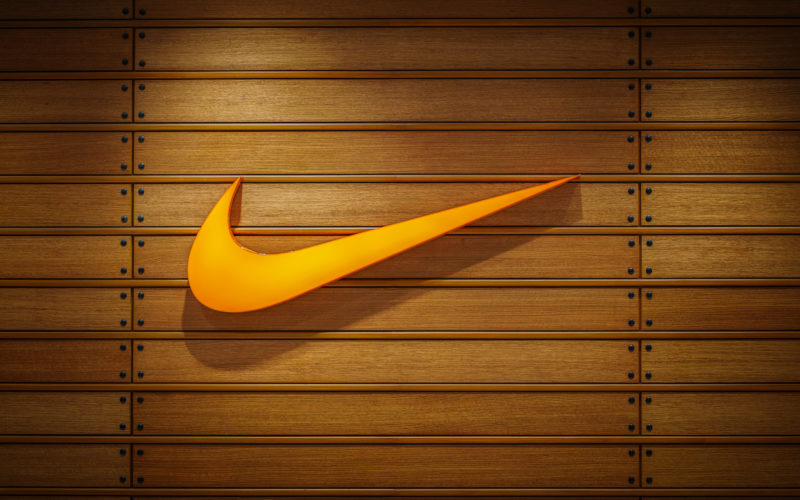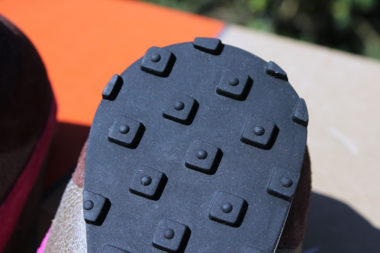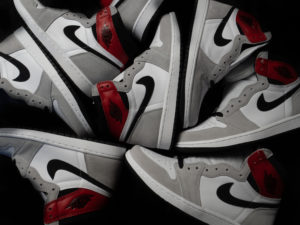
By Ryan Bologna
May 6, 2022
Only Players
Everyone knows Nike — the sneaker company that is worth billions of dollars. In May of 2022, Nike turned 50. How did a track and field coach, a student-athlete and a waffle iron turn into one of the most iconic brands in the world? We tried to figure that out.
Phil Knight attended the University of Oregon where he met Bill Bowerman, the school’s track and field coach. Bowerman was always thinking of crazy experiments with shoes to improve the performance of his team. The two eventually started up a company called Blue Ribbon Sports in Jan. 1964. After working with a Japanese supplier for many years, which later became Asics, the relationship soured and Blue Ribbon Sports cut ties.
Nike was born when Onitsuka terminated Phil Knight’s Blue Ribbon Sports distribution rights.
— Thomas Chua (@SteadyCompound) May 2, 2022
Image credit: @Nike pic.twitter.com/TwBbtjFrNJ
Knight and Bowerman decided to keep pursuing their venture, but they needed a new name. The first employee of the company was Jeff Johnson, and he was charged with that important task. Knight wanted to name the company “Dimension Six,” but everyone teased him because he was the only one who liked the name. Johnson came up with the name Nike in a dream. His reasoning? Nike is the Greek goddess of victory. After some debate, Knight reluctantly agreed to go ahead with the name because they were up against the deadline and, after all, it would fit on the shoe.
Knight was a professor at Portland State University, where he found a student to design a logo. Design student Carolyn Davis was paid $2 an hour ($35 in total) to provide sketches, and the one Knight decided to go with was what we know today as the Nike swoosh. Could you imagine being a college student, creating that logo and seeing the brand take off? Luckily she was given multiple shares in the company, so she wasn’t left out to dry.

Meanwhile, Bowerman was still trying to come up with innovative ideas for high-performance shoes. His first major breakthrough came while eating breakfast. After sta
ring at the pattern of his waffle, he wondered if it would make a sole for a running shoe that gives more traction. His first try resulted in actually gluing the waffle iron shut with rubber and, after some trial and error, the Waffle Trainer was born in 1971.
The shoe was a hit, the first of many in the 70s for Nike. Tennis player Ilie Nastase became the first of many athletes to sign an endorsement with the company in 1972. Nike later found great success with their Tailwind shoe that introduced their signature air technology in 1979.
Nike was thriving by this point, which led to the company going public in 1980. From that point forward, the company made an increasingly big cultural impact. There was no bigger deal, of course, than signing Michael Jordan in 1984.
 Both Jordan and Nike took a risk with this partnership. Jordan was a rookie in 1984, so Nike was placing a bet on him becoming a superstar. (spoiler alert: he did) Nike was nowhere near as established as Converse and Adidas. The landmark deal launched Air Jordan and the unique terms made Micheal Jordan the richest athlete of all time. Air Jordans were wildly successful and have shaped the culture of shoe collecting since they were introduced. They have lost none of their iconic status in the nearly 40 years since launch.
Both Jordan and Nike took a risk with this partnership. Jordan was a rookie in 1984, so Nike was placing a bet on him becoming a superstar. (spoiler alert: he did) Nike was nowhere near as established as Converse and Adidas. The landmark deal launched Air Jordan and the unique terms made Micheal Jordan the richest athlete of all time. Air Jordans were wildly successful and have shaped the culture of shoe collecting since they were introduced. They have lost none of their iconic status in the nearly 40 years since launch.
Nike did not stop there. The “Just Do It” campaign was introduced in the 1980s along with the “Bo Knows” advertisements featuring NFL and MLB star Bo Jackson. The company would continue to sign mega athletes like Tiger, and LeBron not to mention international mega stars Ronaldo and Nadal over the next few decades.
Bo Jackson Nike Poster. Today is his 59th Birthday. pic.twitter.com/8uwTbEC8av
— Baseball In Pics (@baseballinpix) November 30, 2021
Nike’s imprint is all over the globe and especially omnipresent in the US where the company is the official supplier of the NFL and the NBA. Nike is also partnered with 68 colleges and universities accounting for over 50% of all 130 FBS football programs.
It isn’t an exaggeration to say that it would be impossible to imagine modern-day sports or pop culture without the understated but indelible swoosh. Not bad for a company that started with a track and field coach, a young college graduate and a waffle iron.
Leave a Reply